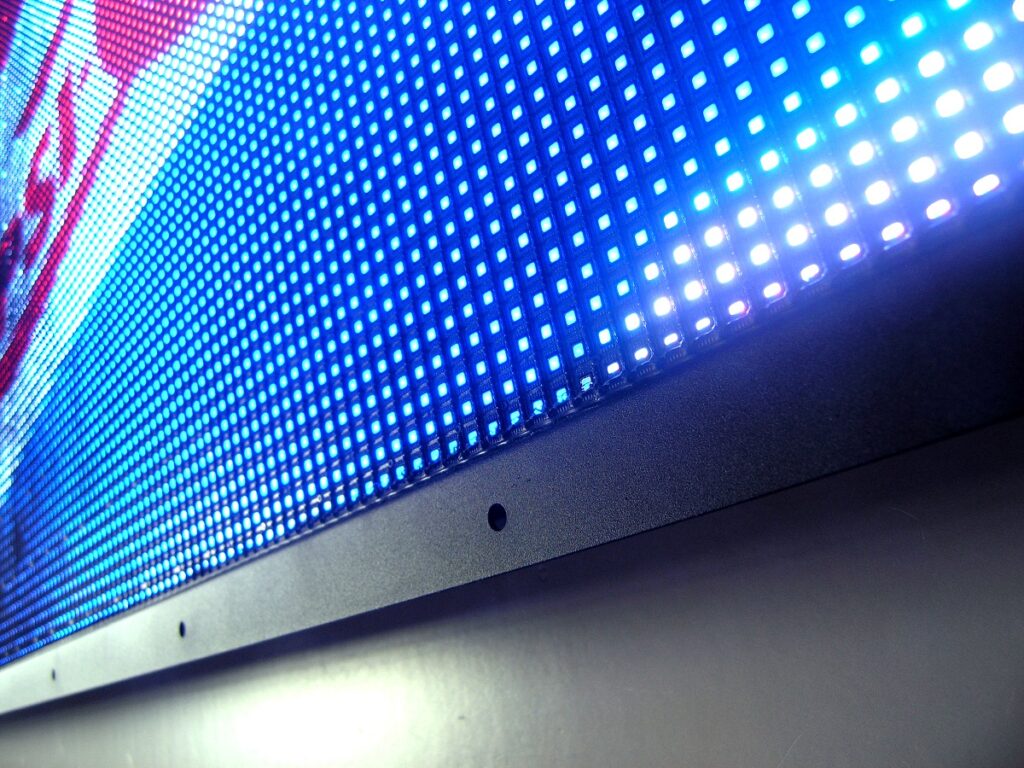Theoretical concepts should be first discussed to facilitate the decision-making process before choosing the most appropriate pixel size. Displays are made of LEDs, i.e. Light Emitting Diodes. One pixel contains three different colored LEDs, i.e. red, green and blue. This combination of these three standard colors can produce almost unlimited colors from the color palette. Pixel pitch is one of the most important parameters of a LED display; as a rule, the higher the pixel pitch, the higher the price. This parameter determines the spacing between individual pixels measured in millimeters. This distance is measured between the diodes’ centers.
Pixel pitch
Before choosing the optimal pixel pitch, you should first determine the distance between the displayed image and viewers. The preferred pixel pitch is correlated with this distance. As a rule, the optimum distance is a distance at which the free spaces between the pixels are not visible. To illustrate this problem, the image displayed must be as comfortable to view as that displayed on a TV set.

Estimated value
But what to do when it is difficult to estimate the minimum distance? Let us refer here to a simple mathematical formula. The assumed standard pixel pitch is 5 mm. Multiply this value by 1000 to get an estimated value at which the displayed image will be readable for viewers. After a quick check, the best estimated distance is 5 m. This can be made easier – the pixel pitch of the module is a value in meters from which we can comfortably view the image on the LED display.
Detailed determinants
The above estimates are only provided as a reference; however, because the pixel pitch is also influenced by the type of contents to be displayed and the conditions in which the display will operate. It matters whether the display operates indoors or outdoors. Will the display show a standard advertisement or more complex images? The smallest available pixel size is 1 mm. However, these are highly technologically advanced and expensive solutions, and sometimes it is better to opt for a larger size, which is also more cost-effective.
P2, P3, P4, or higher – which pixel pitch to choose?
The popular terms P2, P3, P4 and higher define the pixel size. For example, LED P2 display means that the display consists of pixel-LEDs with a spacing of 2 millimeters. As a rule, the longer the distance between the LEDs, the longer the distance at which you can comfortably look at the displayed content. Displays with a pixel pitch of P3 and higher are used for medium and large displays, such as wall screens at all types of events, such as concerts, matches, conferences or celebrations. Displays with a pixel pitch of P2 and lower are recommended for users who opt for smaller high-resolution displays. They are perfect for cinema halls and small broadcasts, or as a display stand at trade fairs.

LED display size
What sizes of LED displays are available? The possibilities are virtually limitless. The space available and the costs are the only constraints. However, when estimating the display size you need, you must be careful about the aspect ratios. The best aspect ratios are 16:9, 21:9 and 4:3.
LED displays are always designed and manufactured according to specific guidelines and customer requirements. Regardless of the pixel size, LED displays must always blend well with the interior and they must reflect the designer’s vision.
You can find more about us and our solutions at: https://inexled.com/products


